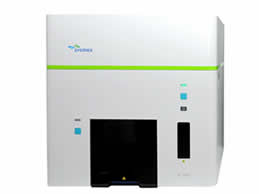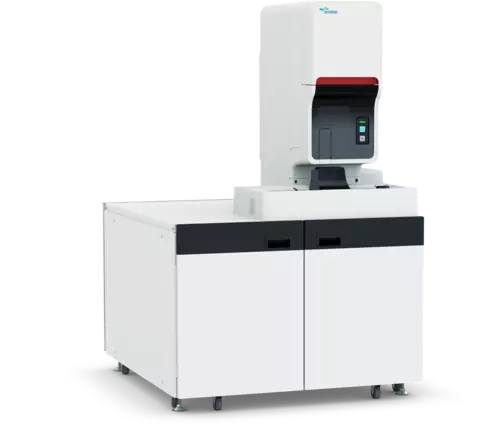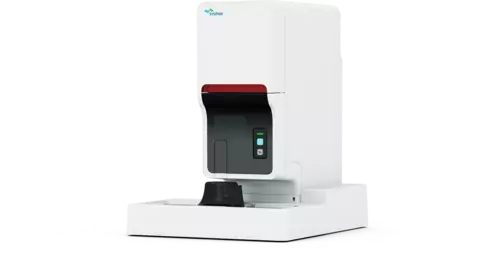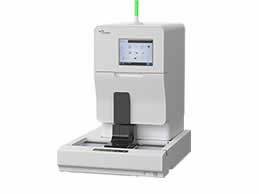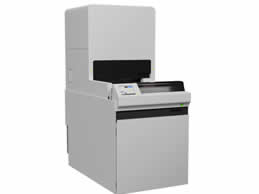XN-31
The fight against malaria starts with diagnostics
- Direct detection of the parasite and quantification (absolute count and % parasitaemia)
- Plasmodia species (P. falciparum or other)
- Measurement of complete blood count
- Limit of detection is 20 parasites / µL
- Up to 60 samples per hour and sample aspiration volume 60 µL (no sample preparation, load and go)
Malaria remains one of the most important public health concerns globally, with more than 3.2 billion people in 91 countries at risk of infection, according to the
2018 WHO report.
Early and accurate diagnosis of malaria is vital in the fight against the disease, so that specific treatment can be initiated to prevent complications and reduce mortality. The Sysmex XN-31 automated analyser can detect and count malaria-infected red blood cells (MI-RBC) within one minute with excellent sensitivity and specificity (Pillay et al*).
Clinical insight
- Be confident fighting malaria: accurate enumeration and direct detection of the parasite facilitates reliable diagnosis.
- Consistent standard LoQ (20 parasites/μL) independent of the operator’s skill.
- All Plasmodia species are detectable.
- The high precision supports reliable monitoring of treatment efficacy.
- The concurrent CBC measurement provides clinicians with important information for clinical correlation.
- Anaemia is a major contributor to mortality in malaria.
- The degree of thrombocytopenia provides an indication of the severity of malaria.
- The WBC count could be helpful to give an indication of other concurrent infections.
Productivity
- The XN-31 incorporates Sysmex’s proven technologies well established for the haematology analysers.
- By utilising this automated solution your lab can shorten the TAT while ensuring a highly sensitive detection of malarial parasites.
- Operating the analyser is easy and does not require a malaria expert.
- The integrated sampler allows high sample throughput and walk-away time.
- The MI-RBC parameters are stable and unaffected by room temperature, which enables the processing of specimens collected and transported appropriately from remote locations.
- Maintenance requirements are minimal whilst being very simple and easy to execute.
- Quality control material for malaria detection available.
| XN-31 configuration | stand-alone |
| Measurement principles | MI-RBC and WBC: fluorescence flow cytometry RBC and PLT: impedance method with hydrodynamic focussing HGB: cyanide-free SLS haemoglobin |
| Aspiration volume: (venous blood sample) |
[LM] mode*: 60 μL [PD] mode: 70 μL (out of 20 μL blood + 120 μL diluent) Throughput [LM] mode*: 55 samples/ hour [PD] mode: 60 samples/ hour |
| Diagnostic parameters | CBC + M channel: WBC, RBC, HGB, HCT, MCV, MCH, MCHC, PLT, RDW-SD, RDW-CV, MPV, PDW, P-LCR, PCT, MI-RBC#, MI-RBC% |
| Research information | information related to the life stage of the malarial parasite |
| Flagging information | information on the malarial parasite species (Plasmodium falciparum or others) |
| Limit of quantification (LoQ) |
[LM] mode*: 0.020 x 103/μL [PD] mode: 0.040 x 103/μL |
| Quality control: | Xbar or Levey–Jennings XN Check material Patient sample-based quality control (XbarM) |
| Dimensions (w x h x d) |
Main unit including the sampler SA-10: 645 mm x 855 mm x 755 mm Pneumatic unit: 280 mm x 400 mm x 355 mm |
| Weights |
Main unit including the sampler SA-10: approx. 78 kg Pneumatic unit: approx. 17 kg |
| Interface | LIS (LAN port) |
 Click Here to Download PDF
Click Here to Download PDF

